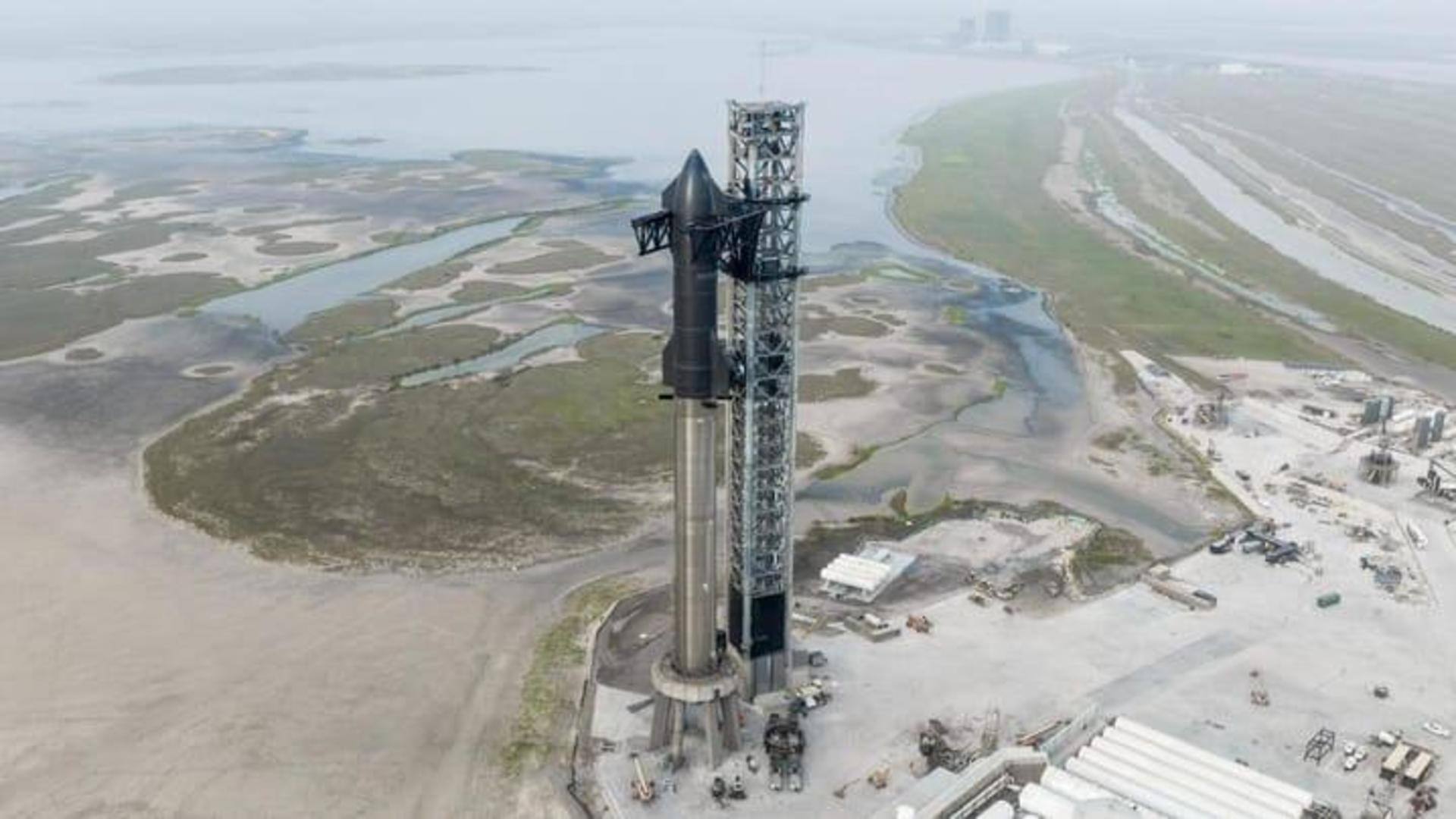
SpaceX Starship's first launch attempt postponed: Here's why
What's the story
SpaceX has called off the first launch attempt of Starship, the world's most powerful rocket.
The decision to scrub the test flight came minutes before lift-off due to pressurization issues in one of the Stage 1 valves.
There will not be another launch attempt today. There will be a gap of around 48 hours before the company plans to launch the Starship again.
Twitter Post
A frozen pressurant valve played spoilsport
A pressurant valve appears to be frozen, so unless it starts operating soon, no launch today
— Elon Musk (@elonmusk) April 17, 2023
Context
Why does this story matter?
SpaceX has been planning to conduct Starship's first test flight for months.
The company recently received the long-awaited license for conducting Starship's first space flight, which was granted by the Federal Aviation Administration (FAA) on April 14.
Unfortunately, we might have to wait a couple of days longer to see the world's most powerful rocket take off.
Failed launch
Today's launch attempt was considered a "wet dress rehearsal"
With less than 10 minutes for lift-off, the mission controllers decided to scrub the inaugural test flight of Starship due to the pressurization issues.
Instead, today's launch attempt was considered a "wet dress rehearsal."
The company worked through the procedures until the countdown but did not launch the rocket.
SpaceX is yet to announce a new launch time for Starship.
Information
'The countdown did its job today'
"The point of the countdown is to allow the teams to progress that T-zero time in a coordinated fashion and really to unveil any issues prior to the ignition sequence. So the countdown did its job today," said Kate Tice, from SpaceX.
Starship
Starship is the tallest-ever rocket
Standing at 395-foot-tall, Starship is the tallest rocket to have ever been constructed.
The Starship system is made up of two parts: a Super Heavy rocket and a Starship spacecraft.
The Super Heavy rocket packs 33 Raptor engines. On top of it, sits the Starship spacecraft, which is designed to break away after the rocket has consumed its fuel.
Information
Starship will beat NASA's SLS rocket when it takes off
Starship will set the record for the most powerful rocket, when it takes off. Its 33 first-stage Raptor engines will produce 16.5 million pounds of thrust during launch, almost twice that of the current most powerful rocket, NASA's Space Launch System (SLS).
Capabilities
Starship will be able to carry both astronauts and payloads
Starship will be able to carry both astronauts and payloads to the Earth's orbit, Mars, Moon, and beyond.
It is claimed to be designed to ferry payloads to much farther distances and at a "lower marginal cost per launch" than the current Falcon rockets.
Super Heavy is capable of hauling payloads of 100,000kg in the Low Earth orbit (LEO) during its future mission.
Maiden flight
The Starship system is built to be fully reusable
The Starship system, comprising the Super Heavy rocket and Starship spacecraft, is built to be fully reusable.
This means that the main hardware components will not be allowed to burn up or be discarded in water, as is the case with other launch systems.
Instead, it will be returned to Earth and will be flown again on future missions.
Events
What was the original plan?
If today's launch attempt had been successful, the Super Heavy rocket would have been brought back with a splashdown in the Gulf of Mexico.
Starship was not scheduled to complete a full orbit around Earth on its test flight. The spacecraft was planned to reach an altitude of 234km and splash down in the Pacific Ocean, off the coast of Hawaii.